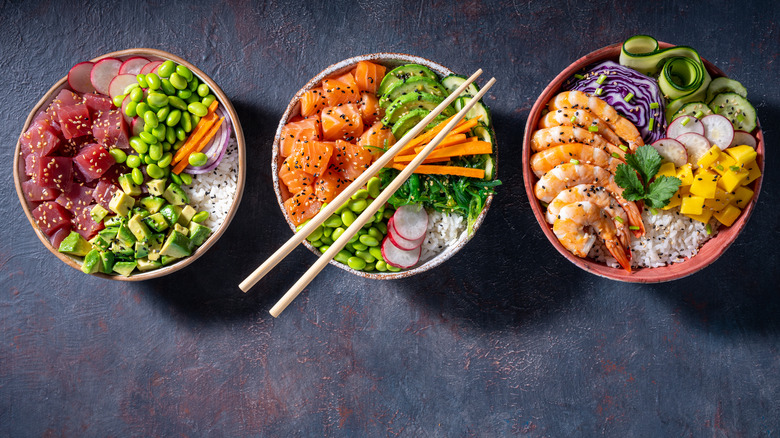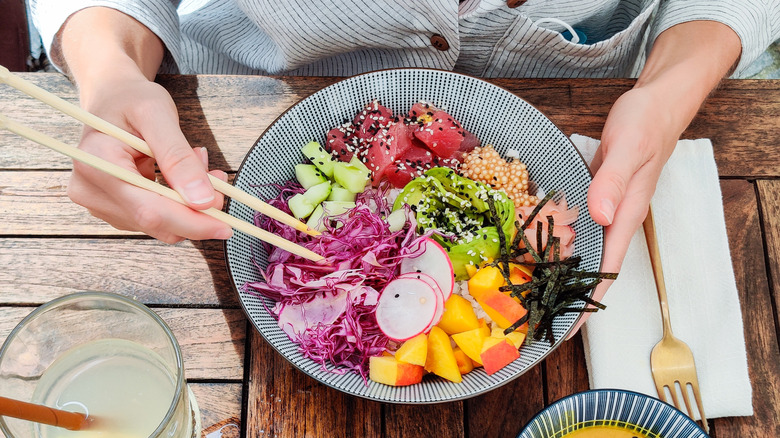Want The Best Fish For Your Poke Bowl? Be Kind To Your Fishmonger
When making a poke bowl at home, fresh ingredients are non-negotiable. Since poke often contains raw fish like salmon or ahi tuna, careful selection of fish is especially crucial to ensure the finished poke bowl is as tasty as possible. Because acquiring fresh fish is easier said than done, depending on where you live, you must seek out professional assistance. In this case, a fishmonger is the perfect person to consult when making your wholesome meal.
Fishmongers have specialized knowledge of different types of fish and often have close connections with the fishing companies that provide fresh catches to restaurants, grocery stores, and fish markets. As a result, they can point you in the direction of the best, freshest fish to utilize in your poke bowl. Keep in mind that the same fish that works well in poke bowls is also suitable for ceviche, which is a preparation that utilizes raw fish marinated in citrus juice. Accordingly, you can also inquire about ceviche-friendly fish options when conferring with your fishmonger.
How to source high-quality fish where you live
In addition to asking your fishmonger for recommendations, there are other tips you can utilize when hunting down fresh fish to include in your poke bowl recipes. According to commenters on Reddit, stores that specialize in supplying restaurants with seafood are usually a safe option. These establishments move lots of fish each day and must meet the rigorous standards of dining establishments that are beholden to strict rules. According to one person, "I go to restaurant supply stores and pick up individually frozen vacuum sealed tuna. It's pretty cheap and about as safe as you can get."
Other people emphasized the importance of buying farmed fish when you intend to eat it raw. One commenter stated, "Farmed fish is also less likely to have parasites than wild-caught," while another person recommended freezing fish prior to consuming it raw, stating, "Good sushi grade fish is ALWAYS frozen first to keep peak freshness." Which brings up another important point to consider: What exactly does sushi grade mean?
Understanding the sushi grade label
Somewhat surprisingly, the term sushi grade is not backed by any federal regulations. The label is mostly used for marketing purposes, and it's possible for a product to bear the designation of sushi grade without adhering to any particular standard. However, fish labeled as sushi grade is likely to have been processed using certain methods to ensure the utmost quality and safety.
Flash freezing of fish intended to be eaten raw is of major importance, and fish that has been flash frozen is often labeled as sushi grade. Flash freezing involves subjecting fish to temperatures of at least -35 degrees Fahrenheit for a period of 15 hours. Doing so helps eliminate any parasites within fish, as parasites cannot survive at such low temperatures. Sushi grade can also indicate that fishing boats followed certain practices immediately after catching the fish. For example, fish must be gutted soon after catching and put on ice until flash freezing takes place. These steps are integral when enjoying raw fish within a poke bowl, regardless of the type of fish you ultimately choose.


